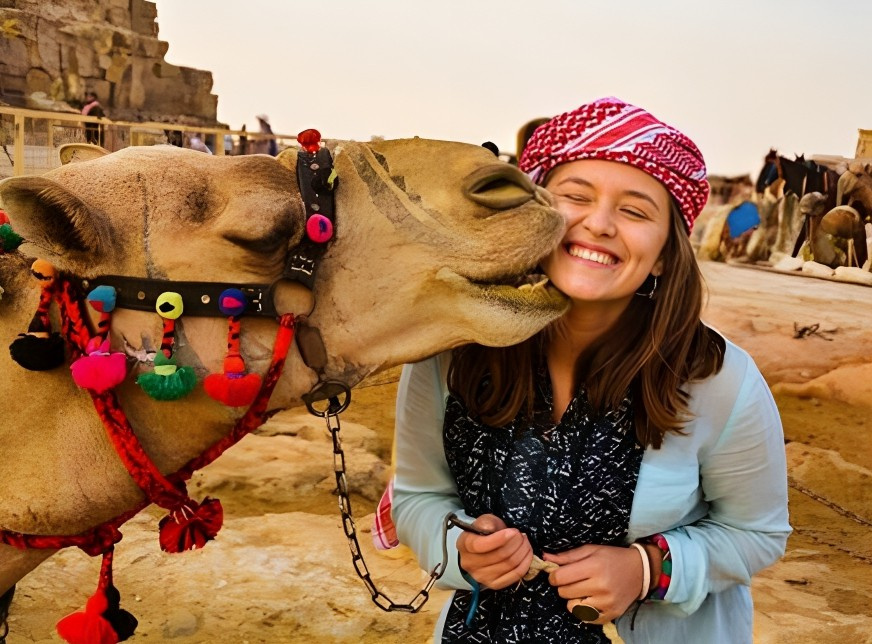
Madinat Al Fayyum
Fayoum is an Egyptian governorate located in northern Upper Egypt, about 92 kilometers from Cairo. It is the largest natural oasis in Egypt, and is characterized by its picturesque nature and charming views.
History of the Faiyum Region:
1-Prehistoric Era: The area around the oasis has long attracted settlers because of its incredible fertility, the result of a Pleistocene-era diversion of the Nile that transformed the arid desert into an oasis with a mighty lake surrounded by arable land and filled with abundant wildlife. The region’s modern name, Faiyum, is a reference to this, coming from the Coptic word meaning “sea” or “lake”. With excellent hunting and opportunities for successful agriculture, it’s no wonder that the ancient people of Egypt flocked to the oasis. Formal settlements are likely to have been established as far back as 5,200 BC; although evidence suggests that around the end of the fifth century BC, there was a drought that caused many of these early farmers to migrate away from the area.
2- In the Time of Pharaohs: By the dawn of the pharaonic Old Kingdom in the third century BC, however, the area around Faiyum saw a resurgence in popularity when it became a favoured hunting ground for the pharaohs of ancient Memphis (modern-day Cairo). At this time, the biggest and most influential settlement in the oasis was called Shedet. Shedet reached the peak of wealth and influence during the 12th Dynasty, when Amenemhat I commissioned canal work that restored the ancient inland sea, Lake Moeris, to its prehistoric size. Shedet became the center for the cult of the crocodile god, Sobek, with many temples dedicated to his honor. There is even evidence that the Egyptians bred captive crocodiles that were kept and worshipped as the embodiment of Sobek for this reason, the Greeks knew the city as Krokodilopolis, or Crocodile City.
3-The Ptolemies and Beyond: During the Ptolemaic era, Shedet was rechristened first as Ptolemais Euergetis and later as Arsinoe, in honour of the sister-wife of Ptolemy II Philadelphus. This same Ptolemy, who ruled from 283 to 246 BC, introduced a canal system including over 200 waterwheels that served to drain much of Lake Moeris in an effort to reclaim more arable land – while simultaneously ensuring that the land remained irrigated. These waterwheels are still in existence today. Ptolemy invited Greek settlers to inhabit the newly drained land, which is why many of the minor settlements around modern-day Faiyum are dominated by Ptolemaic-era ruins. The city retained the name of Arsinoe under the Romans and later, with the dawn of Christianity, became the seat of the bishopric of Arsinoe.
Lahun Pyramid
Lahun Pyramid | Egypt Tour Packages
The pyramid of Senusret II at El Lahun is the pyramid complex constructed for the pharaoh Senusret II in the Twelfth Dynasty.
wadi al hitan whale valley
Wadi Al-Hitan (Whale Valley) | Egypt Tour Packages
Wadi Al-Hitan is a tourist area located in the Egyptian Western Desert in Fayoum.Tourists come there every summer to see the Milky Way and the stars.
Wadi Al Rayan
Wadi Al- Rayan | Fayoum| Egypt Tour Packages
Wadi El-Rayan is a natural depression in the western desert of Egypt,42m below the sea level. It consists of two lakes connected by Egypt's only waterfal.
Mudawara Mountain Magic lake Fayoum and Tunis Village Al Fayoum
El Mudawara Mountain & Tunis Village in Fayoum | Egypt Tour Packages
Mudawara mountain &The small village of Tuni is located in the oasis of Fayoum , on the way to Wadi Rayan. Located on a hill facing a large salt water lake
Things to do in Fayoum
Things to do in Fayoum | Egypt Tour Packages
Faiyum is a city in Middle Egypt. Located 100 kilometres southwest of Cairo, in the Faiyum Oasis, it is the capital of the modern Faiyum Governorate.
Kom Aushim Museum
Kom Aushim Museum | Egypt Tour Packages
Museum of Kom Aushim is located in the Fayoum Governorate of Egypt.It is an archaeological museum dedicated to the history and heritage of the ancient city
Pyramid of Meidum
Pyramid of Meidum | Egypt Tour Packages
Come with us to explore the first pyramid in Egypt Sneferu began building a seven-step pyramid that would have been 65 metres high.









